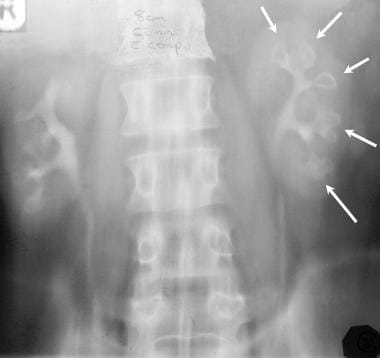What is analgesic nephropathy?
In this article we will describe what is analgesic nephropathy. It is a condition characterised by damage to the kidneys due to long-term or excessive use of certain pain medications; particularly analgesics like nonsteroidal anti-inflammatory drugs (NSAIDs) and combination analgesics containing phenacetin, aspirin, or acetaminophen.
Note. NSAIDs can affect the kidneys in 4 different ways – see pathology below.
Here are 10 facts about analgesic nephropathy.
- Definition. Analgesic nephropathy (AN) refers to kidney damage caused by the long-term use of certain pain medications.
- Epidemiology. It is most common in people older than 45 years, and in women over 30 years
- Cause. Analgesic nephropathy is primarily associated with the excessive use of analgesic medications, including:
- Aspirin, naproxen, ibuprofen
- Bucetin
- Phenacetin
- Paracetamol (acetaminophen).
- Pathology. The specific kidney injuries induced by these analgesics are:
- Chronic NSAID-associated disease
- Renal papillary necrosis. This refers to the death of cells in the renal papillae (the innermost part of the kidney)
- Chronic tubulo-interstitial disease (TID). Inflammation and scarring of the kidney’s interstitial tissue
- Acute NSAID-associated disease
- Mechanisms
- Combination use: damage is more likely when these medications are used in combination, especially if phenacetin is involved
- Decreased blood flow: reduced blood flow to the kidneys contributes to the damage
- Antioxidant depletion: rapid consumption of antioxidants leads to oxidative damage in the kidneys.
- Chronic NSAID-associated disease
- Clinical presentation
- Headache
- White blood cells in urine (pyuria)
- Protein in urine (proteinuria)
- AKI (or AKI on CKD)
- CKD (or its complications – e.g. anaemia or high blood pressure (hypertension))
- Renal colic (see below).
- Diagnosis. Diagnosis involves a combination of medical history, physical examination, laboratory tests (such as blood tests and urine tests), and imaging studies (such as ultrasound, IVP or CT). Eventually the kidneys decrease in size.

IVP of a 53-year-old man with analgesic nephropathy, with ‘egg-in-a-cup appearance’ characteristic of renal papillary necrosis. Note the bamboo spine, characteristic of ankylosing spondylitis - Complications
- Acute and chronic pyelonephritis (kidney infection(s))
- Obstructive nephropathy; papillae can detach and obstruct one (or both) ureters causing renal colic. If its bilateral (and at the same time), it can present as anuric AKI. This is very rare
- Chronic kidney disease (CKD)
- End-stage renal failure (ESRF); requiring dialysis or a kidney transplant
- Non-aspirin NSAIDS are associated with an increased risk of transitional and renal cell carcinoma.
- Treatment. Analgesic(s) should be stopped. This may not stop the progression of CKD.
- Prevention. Analgesic nephropathy can be prevented by limiting the availability of OTC analgesia, especially NSAIDs and combination drugs
- Incidence and history
- Analgesic nephropathy was once common in parts of Europe (especially Switzerland), Australia, and the United States due to phenacetin-containing medications
- In fact, in an 2008 Australian study, of 31,654 renal replacement therapy patients, 10.2% had analgesic nephropathy (Chang, 2008)

In Australia, in the 1950s, this was a common advert for a popular combination analgesic - Also, in the past patients with chronic rheumatological disease (e.g. rheumatoid disease, ankylosing spondylitis) were given high dose NSAIDs for prolonged periods; this is fortunately rare now
- Its incidence declined significantly after the use of phenacetin decreased in the 1970s and 1980s
Summary
We have described what is analgesic nephropathy. We hope it has been useful.
Other resources
Obituary to analgesic nephropathy (Mihatsch, 2006)
Review article: Keen, 2023
https://www.youtube.com/watch?v=pvd5loX8mss&t=12s
Last Reviewed on 30 April 2024
